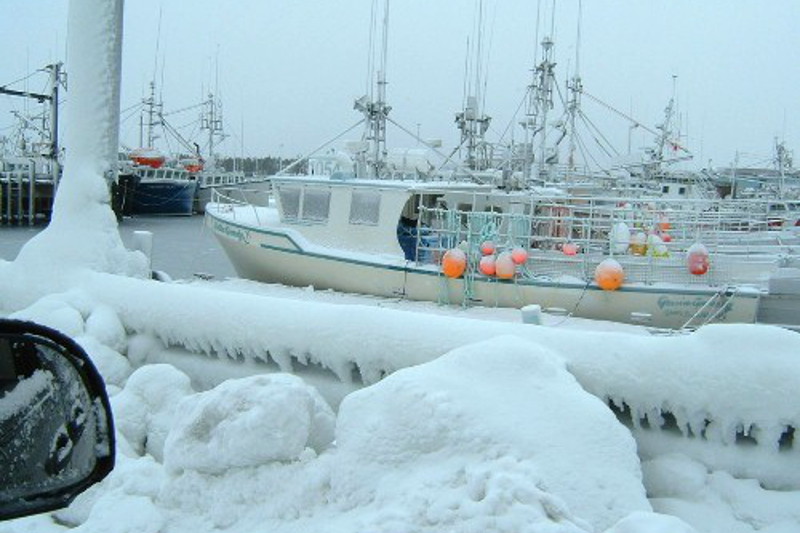Yet another “it’s cold in Canada” post. I am sitting in the computer room with the door closed and the heater on high and I am still freezing. My hands are shaking as I am typing this. Poor Angel has taken to sitting next to the heater under Chris’ desk; she has been there so long that one half of her body has turned yellow. I don’t blame her, I want to curl up under the desk as well.
All of Canada is rumoured to be under the same blanket of cold. It was thought to be -54C here last night with the wind chill, and tonight is expected to drop to -47C. On Thursday it is supposed to warm up to -20C and we are all ecstatic. At -20 there is no need to worry about exposed flesh freezing in less than a minute.
Included are photos that my dad forwarded me of Clarks Harbour on Cape Sable Island. All the boats that you see in the photos are Lobster fishing boats. Cape Sable Island is on the southern most tip of Nova Scotia and the island is famous for quite a few things. Unfortunately, it has the onerous title of “The Graveyard of the Atlantic” because of the number of shipwrecks that have occurred in the area over the last few centuries. The first recorded shipwreck was Sir Humphrey Gilbert’s ship The Delight, which found itself ship wrecked on the beach in August 1583.
Another thing the island is famous for is its unique species of wild horses. The common belief is that the population of wild horses on the island are an artifact of the number ship wrecks that occurred in the area. Vessels that were wrecked on the beaches often carried horses and if these horses survived they made their way to the shores of the island where they stayed and developed into a hearty stock of animals.
The historical belief is that Rev. Andrew Le Mercier, a Huguenot living in Boston, set the first horses out to graze on Sable Island one day and the rest they say is history. But then again, we all know that history is not necessarily true. Personally I like the shipwreck story better; it’s much more dramatic.
Currently there are estimated to be 250 – 350 wild horses on the island at any given time. These horses are studied by scientific groups for their unique behaviour and are also protected under Canadian (and perhaps international) law. You can read more about the island on the Sable Island Green Horse Society website.
